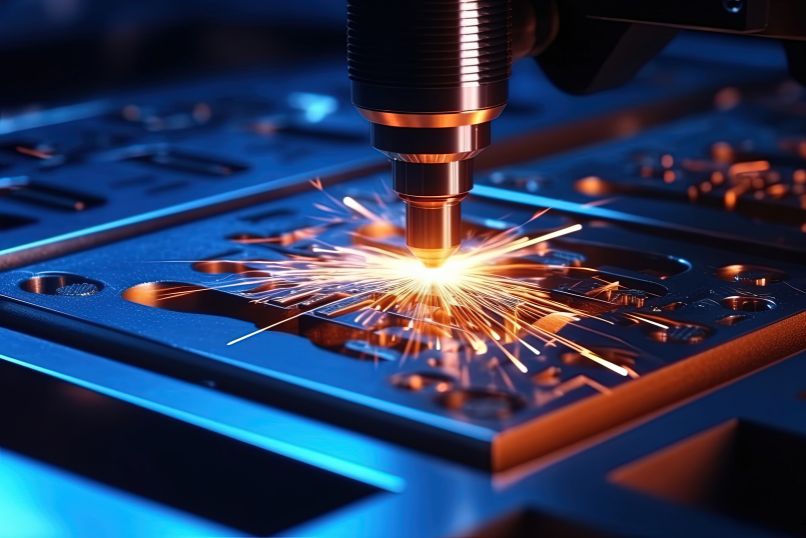Laser Cutting

Laser cutting is a precise and efficient technology used to cut and engrave materials by directing a high-powered laser beam at the material, which is then melted, burned, vaporized, or blown away by a jet of gas to leave a high-quality surface finish. It is commonly used in industrial manufacturing, but also in small-scale applications like hobby projects, art, and even medical device production. Below are the key aspects of laser cutting
- Laser Resonator: The source of the laser beam.
- Beam Delivery System: Mirrors or optical fibers that direct the laser from the source to the cutting head.
- Cutting Head: Contains the lens and nozzle for focusing the laser and gas to the precise point.
- Control System: CNC (Computer Numerical Control) systems guide the motion of the cutting head according to the programmed path.
Advantages of Laser Cutting
- Precision: Laser cutting provides extremely high levels of precision, with very fine cuts possible, even on complex shapes.
- Minimal Material Waste: The laser’s narrow beam allows for minimal kerf (the width of material removed by the cut), reducing waste.
- High Speed: Lasers can cut through materials much faster than traditional cutting methods, especially when cutting thin materials.
- Flexibility: It can cut a wide variety of materials, from metals to non-metals like wood, plastics, and fabrics, making it versatile for different industries.
- No Physical Contact: The non-contact nature of laser cutting reduces wear on the tools and minimizes contamination of the material.
Laser Cutting Parameters:
Power: The intensity of the laser, typically measured in watts. Higher power is needed for thicker or harder materials.Speed: The rate at which the laser moves across the material. Faster speeds are generally used for thinner materials.Focus: The laser must be correctly focused on the material to achieve the most efficient cutting and minimal kerf.Assist Gas: Gases like oxygen, nitrogen, or air are used to blow molten material away and also to cool the cutting surface, affecting the quality and speed of the cut.